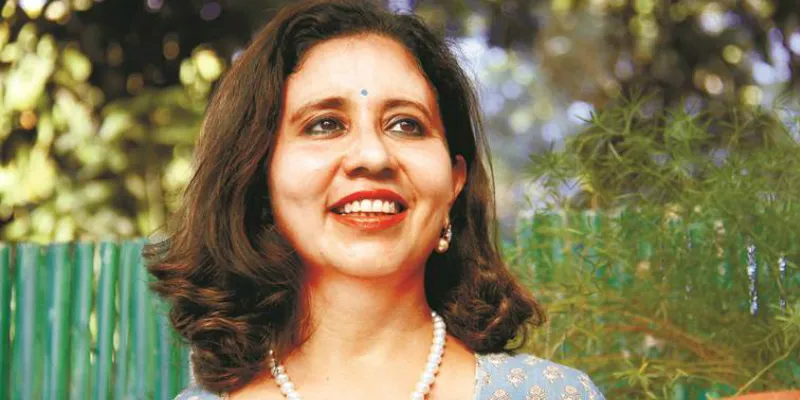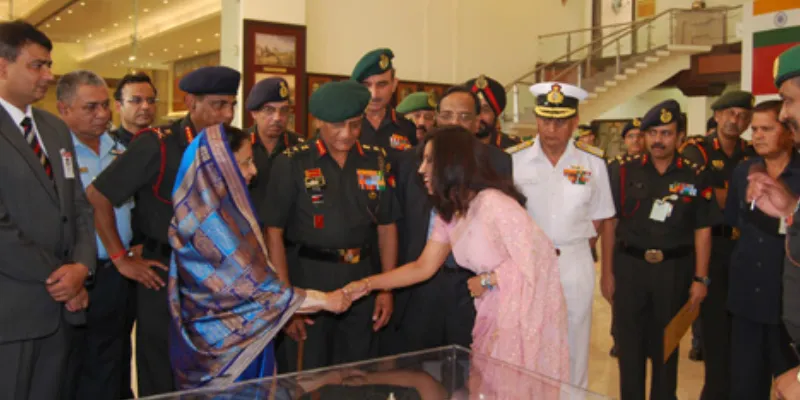Meet the “self-made" interior designer behind iconic structures like the Rashtrapati Bhavan
She's one of the go-to decorators for prestigious government buildings, and some of her structures are the only one-of-their-kind in Asia! Meet art curator and designer Masooma Rizvi.
Besides being a designer, Masooma Rizvi is a true connoisseur of India’s heritage and culture, and is fascinated how it manifests itself in India’s architecture and décor.
One can even go to the extent of saying that is her signature – how every space she touches is transformed into a rooted, cultured mirror of the history and heritage of where it sits – for she has explored the length and breadth of India, and even travelled extensively internationally, in order to grant the depth of history and perspective to her already sharp aesthetic sense.

No wonder she has been awarded assignments from government institutions, hoteliers and corporates of great repute like the Rashtrapati Bhavan, Manekshaw Centre, and Pravasi Bharatiya Kendra, and in turn, left her timeless mark on them.
Her own roots
Hailing from Telangana, Masooma Rizvi says she belongs to no place in particular - for her father served in the Indian army and the family lived all over the country. “Even when I was a child, I would spend hours decking up my dollhouses and then my friends’ dollhouses, and then some more! The redesigning never ended,” she recounts.
She completed a Bachelors’ degree in science, but eventually circled back to her true love – designing, and did her Masters in conservation.
Starting her career at 22, she worked in interior design, museology, and art curation, and was even awarded the Young Achiever Award in 2002, which granted her the self-assuredness to build her own empire, but more importantly the freehand to paint the world with her own design sensibilities and ideas, for red-tapism, she says, was rampant in big design houses.
“Often, new ideas are not well-received. I do not believe in 9 to 5 jobs especially in a creative field. My designing starts after 9 pm! So it made sense for me to have my own firm,” she explains.
Bringing out her individuality
She started out like any other - doing independent houses until some assignments for Army messes came along, because she was an army-child.
However, breaking into the coveted government circuit was one thing, staying there and making a mark was a whole other. Masooma insists that the government favours merit above all else. “I was very fortunate that my work was very well-received. Merit is the only factor. “I think when you do good work, people take notice and I was very lucky that that’s what happened for me! Working for these Government projects is a privilege. I think it was sheer quality of work that opened up doors for me,” she says.

The Manekshaw Centre, for example, was inaugurated by the then president of India Pratibha Patil who had been eager to redo the state dining in the Rashtrapati Bhavan but several designs had been unsuccessfully presented to her.
“I think she had seen my work or had heard my name when she asked me to show her designs, I was absolutely elated! I worked on several state-of-the-art designs and presented them to her, and she loved them! The Rashtrapati Bhavan assignment was a life-changing event in my life,” she recalls.
She says she wasn’t given any guidelines as such, in the brief. She instantly knew what she wanted for that space – for it to embody the spirit of not just the incumbent president, but instead, the legacies of all the presidents and the history of the building itself – which is now increasingly clear in every corner of the building.
“Personally, I’m very proud of what my team had done for the Manekshaw Centre assignment. That space was designed not just for the culture and diversity of our country, but also for the military forces of India. I wanted to pay an ode to our brave military forces, with my work. I incorporated a few details in that project like the four pillars in the Centre, which symbolise the four wars won by the Indian Armed Forces,” she explains.
The Pravasi Bharatiya Kendra project she went on to be awarded was also as minutely detailed. “It was converted into a living museum that forms a narrative for those people who settle abroad, but look for their roots in their homeland. An element in this project was a bronze model of a boat with four men and a woman sitting inside, marking the first ever foreign journey by Indians to become indentured labourers at Fiji and Guyana,” she narrates.
However, the project she found the most challenging so far was Amar Jawan Jyoti in Japiur, as she was working with a time restraint, space restraints as well as budget restraints. “But we kept all the restraints in mind and in fact worked with them to create a stunning corridor museum, one of the only one of its kind in Asia!”

Crafting the perfect work-family-life balance
While that was her most compelling assignment on the professional front, personally, as a woman entrepreneur, a persistent challenge was being away from her husband. She is an army wife, but the demands of her career have made it very unfeasible for her to travel and relocate with him when he receives a new posting.
“I would constantly be on my toes, juggling my professional and personal life. And while women are finally taking up leadership roles all over the world, there is still a hesitance to accept them as rightful leaders or informed leaders. It is a challenge I face, but I know my work will and does speak for itself,” she explains.
However, this experience – as well as the journey of building her own firm from scratch – has made her especially mindful of the hurdles and difficulties budding artists and women entrepreneurs face in getting their careers off the ground.
“In my firm, I make it a point to hire maximum women artists without going to any middlemen. I travel across the country to meet with them and employ them directly so that their work gets its due credit. Recently in fact, I had a Women Empowerment Exhibition in collaboration with the American Centre, New Delhi, showcasing the works of ten budding women artists,” she says.
On the anvil now, are some prestigious projects including an international one, an art project in Central Delhi, and a Government art project – not to mention completing her PhD, which she has rather impressively embarked upon at her age.







